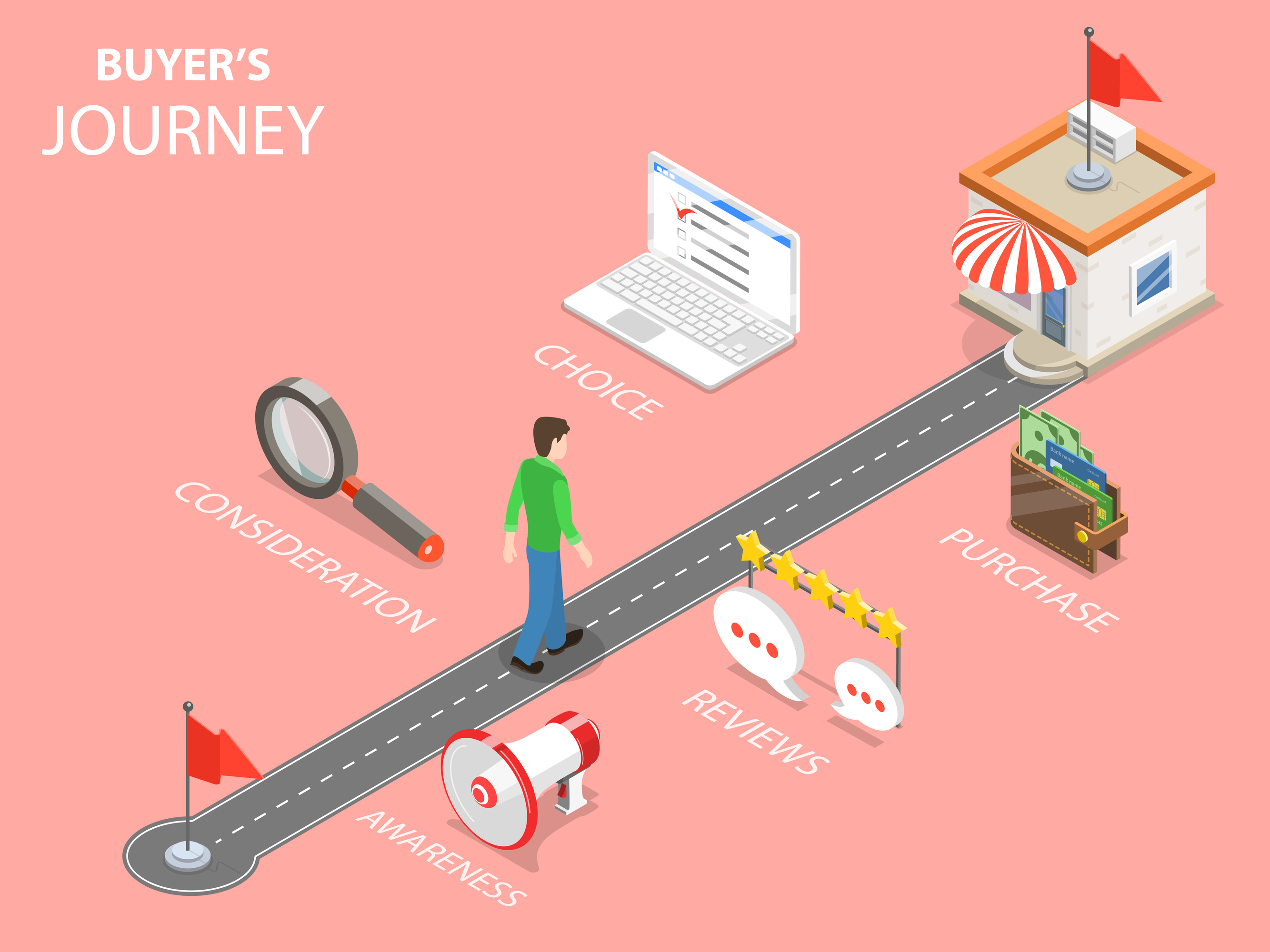How to create content for different stages of a user journey

Does content marketing drive results? Yes! Is mapping the user journey critical? Also, yes! Any marketer worth his salt knows that both content marketing and mapping the user journey are essential ingredients for creating a stellar marketing strategy, but combining the two isn’t as easy as making a quick PB&J sandwich.
The challenge lies in effectively matching the right mix of content with the distinct stages of the user journey. If you’ve been raking your brains over figuring out the best approach for each stage, look no further. Here, we elaborate on creating an overall multi-level content marketing strategy, featuring the right type of content that elicits the desired result across the purchase funnel.
Awareness
This is the first touch point. At this stage, your prospective customers have little to no knowledge about the existence of your brand. The right content strategy for the top of the funnel also depends on the product or service you offer. Your content choice will vary greatly for creating awareness for different types of product, such as home appliances vis-à-vis a fashion brand.
Although paid ads work fantastically well throughout the user journey, they work best during the awareness stage. Well-shot videos addressing pain points and highlighting benefits immediately strike a chord with the right audience. Also, since 81% of shoppers search online before making a purchase, comprehensive blog posts, How-to and product-centric videos, whitepapers, etc. are also highly recommended.
Consideration
Your audience is now aware, but still unsure of choosing your brand. This stage takes more effort to nurture them down the funnel. Webinars can highlight the benefits in detail while email marketing campaigns, especially with discounts and offers can be the final nudge.
Social media posts borrowed from the webinar or with discount codes can seal the deal. Blog posts drilled down to address specific concerns may put your customers’ mind at ease. Emails with customer testimonials too help instil the trust in your brand.
Purchase
This is the fruit-bearing stage of the user journey where your customer is finally ready to buy. Re-marketing with the right content is an essential part of this stage. Suppose, the customer acted to all the intended responses to the content in the awareness and consideration stage, they’re now primed to buy. But your brand may not be the top of their mind or they may not completely trust you yet. The need here is to make the purchase process smooth and, if needed, give them the final push. Think of Netflix or Amazon’s free trial that warms up the customers to take a paid subscription.
Social media posts and e-mails with customer testimonials, discounts and rewards, success stories, to harping on user-generated content align well with the purchase stage.
Retention
Marketers know that the user journey doesn’t stop at purchase. Since the cost of acquiring a new customer is much higher than the cost of retaining an existing one, significant content marketing efforts must be made during the stage.
The advantage is that basis the purchase stage, you have an idea about the customer’s preference. Posts, emails, webinars, whitepapers, blogs, etc. customized to their preference or highlighting new products will prompt repeat purchase. Personalized content goes a long way in not just retaining customers but also converting them to brand stalwarts.
While creating content for each stage is essential, do not forget to repurpose old content after analyzing what worked for other customers. Content marketing intends to add value, and once you’ve mapped the user journey, build your content marketing strategy by factoring in what type of content and medium works for each stage, instead of shooting in the dark with a blanketed approach.
